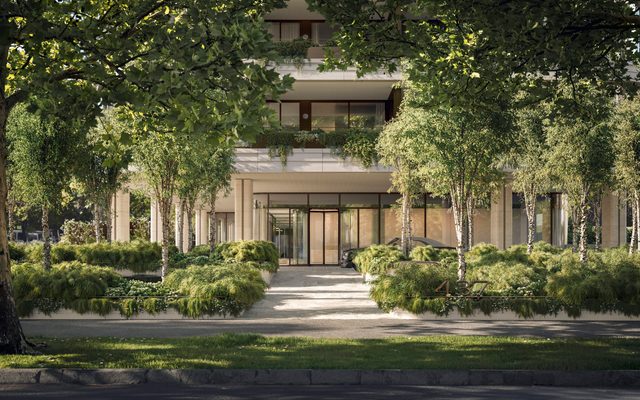This article is from the Australian Property Journal archive
THE Reserve Bank held interest rates steady as expected yesterday, and governor Michelle Bullock moved to squash hopes of a cut before the end of the year that could help ease the cost-of-living and housing crises.
The official cash rate remained at 4.35% following last week’s official data that showed the CPI came in at 3.8% in the 12 months to the June quarter, staying clearly above the RBA’s target band of 2% to 3%.
“Inflation in underlying terms remains too high, and the latest projections show that it will be some time yet before inflation is sustainably in the target range,” the RBA’s post-meeting statement read.
“Data have reinforced the need to remain vigilant to upside risks to inflation and the Board is not ruling anything in or out. Policy will need to be sufficiently restrictive until the Board is confident that inflation is moving sustainably towards the target range.”
Bullock told the now-customary post-meeting press conference that a “near-term reduction in the cash rate doesn’t align with the board’s current thinking”.
“I understand that this is not what people want to hear. I know there are many households and small businesses that are struggling with interest rates where they are.
“But really, the best thing we can do…is to bring inflation back down to target because we can’t let inflation get away.”
The central forecasts set out in RBA’s statement are for inflation to return to the target range late in 2025 and approach the midpoint in 2026.
ANZ head of Australian economics Adam Boynton said the major lender’s view remains unchanged, still expecting for the first cut in February 2025, with the cash rate to end that year at 3.60%, marking the low for the cycle.
“Given the tone of today’s statement, a rate cut this year would most likely require a much more rapid deterioration across the activity side than we expect.”
Stage three tax cuts, easing inflation and population growth will support household spending and the economy into 2025.
Little impact on housing trends
Tim Lawless, research director at CoreLogic Asia Pacific, said that although a stable interest rate decision is “seen as a positive for borrowers and housing more broadly, we aren’t expecting today’s outcome will have a material influence on housing trends”.
“While stable rates and lower inflation should help to lift consumer sentiment, which has historically shown a close relationship with property sales, the August hold decision may not be enough to see that rise in consumer sentiment flow through to housing market activity.
“Recent growth in property prices has had more to do with low supply, tight rental conditions and demographic factors than sentiment through the housing upswing to date.”
He said many of these factors are now losing their potency, with the trend rate of home sales easing as affordability becomes more challenging, migration slows and momentum leaves the upswing in rents.
“Even if sentiment lifts, an improvement in affordability barriers or strengthening in household balance sheets isn’t likely until interest rates start to fall.”
Housing supply stagnant
Master Builders CEO Denita Wawn said that more needed to be done to bring inflation under control and increase investor confidence in the building and construction industry.
“The building and construction industry has always been among the hardest hit by interest rate rises. Each rise over the last two years has meant a decline in building activity and new home building, prolonging the housing crisis.
“More needs to be done to bring rates down, reduce inflation and give buyers the confidence they need to invest their money in new home building.”
Australian Bureau of Statistics data released in the past week showed owner occupier borrowing remains very weak, although investor borrowing for both existing and newly built homes is strengthening and now accounts for 46% of all new home construction loans, which could help the cause of new supply.
Wawn said, “If we are going to meet the 1.2 million new home target of the National Housing Accord, we need to see more private investment in new home building. The current economic environment is discouraging that investment.”
“Australia needs new homes and people want new homes. We need governments to make changes, to introduce an inflation circuit breaker, to encourage that investment which in turn will help to ease cost-of-living pressures while simultaneously encouraging building activity.”
Anthony Waldron, Mortgage Choice CEO, said the ongoing stability in home loan interest rates will support buyer and seller confidence heading into the 2024 spring selling season. PropTrack director economic research Cameron Kusher agreed, and noted that despite slowing price growth, more properties are being listed for sale and sales volumes remain robust.




